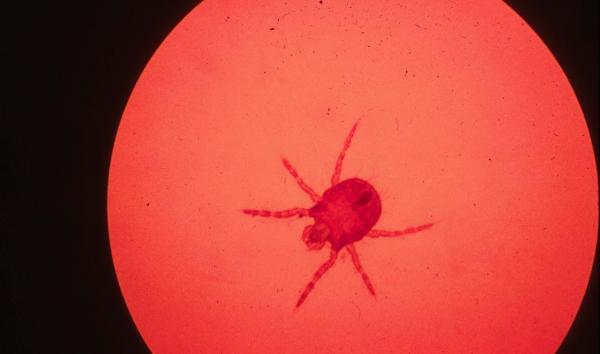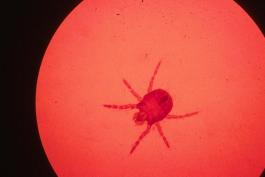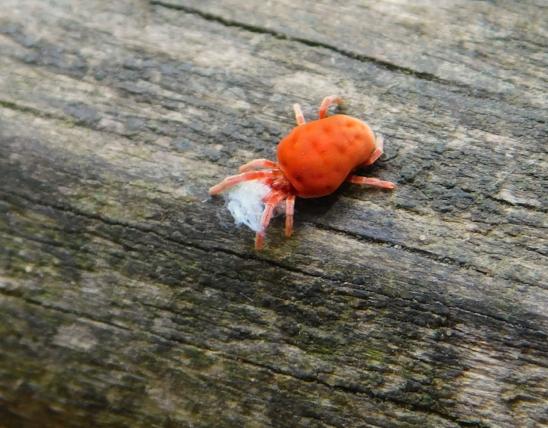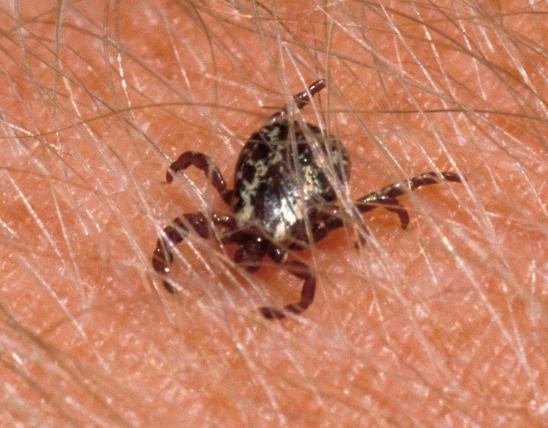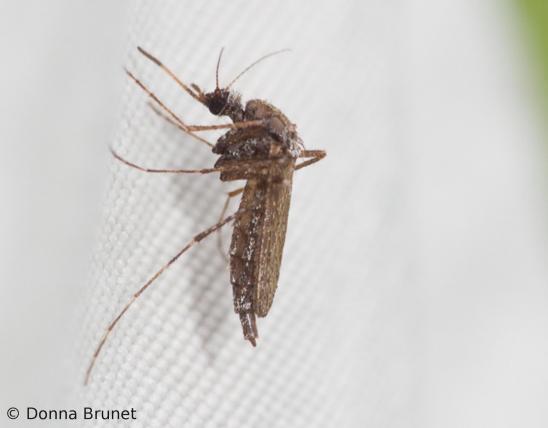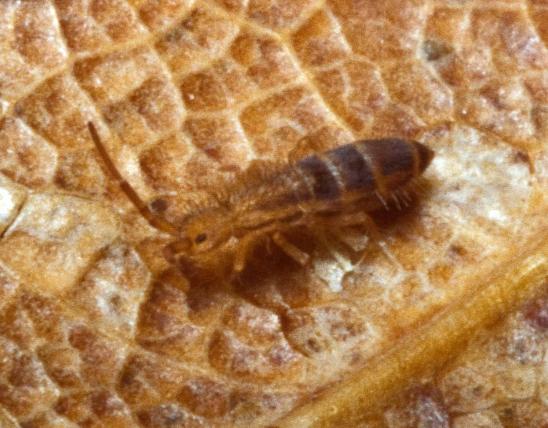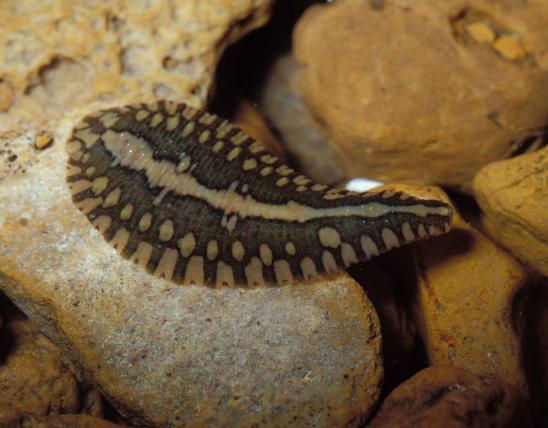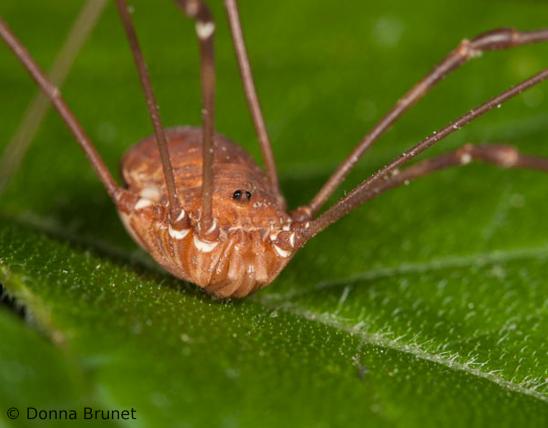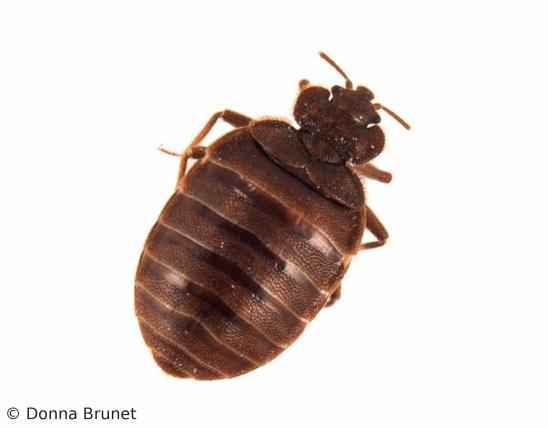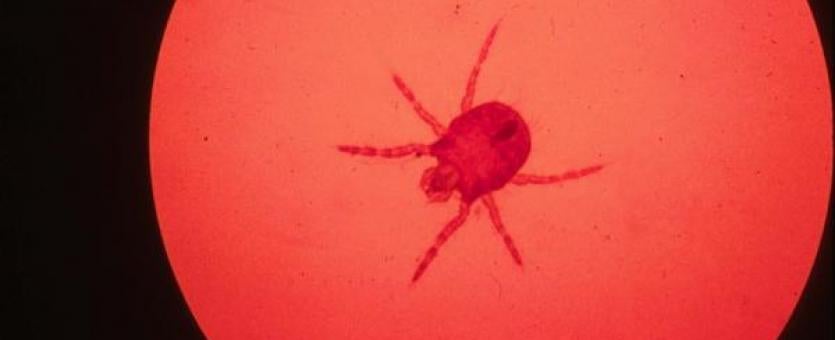
Chiggers are extremely tiny, and it is very unlikely you will "see" one unless you are looking for them. You will need a hand lens or microscope to see them well. Their presence is best known, instead, by the intensely itchy welts they leave behind, usually where your skin is thin and tender (ankles, backs of knees, about the crotch, under the beltline, and in the armpits) and where tight clothing proves an obstacle to them (as where a belt or elastic band limits their wanderings). (Mosquito bites, by contrast, are usually in exposed places where those flying insects can easily land.) Chigger bites sometimes have a tiny red dot at the center, which is the remains of a scablike tube your body formed in response to the chigger's irritating saliva.
Larval chiggers are red and have 6 legs. A cluster of them can sometimes be seen on your skin because of their reddish color. Chiggers are red, but not from dining on blood as many people think. After a blood meal, chiggers look yellowish. Adult chiggers have 8 legs and look like several other types of mites.
Diameter (larvae): less than 1/150 inch; adults: about 1/60 inch.
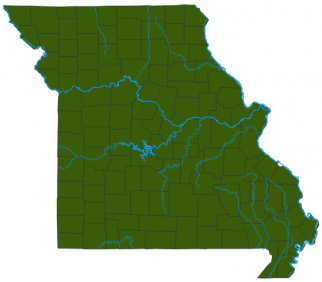
Statewide
Habitat and Conservation
Chiggers survive best in brushy, grassy, or weedy areas that retain some moisture during the day. Their distribution within an area is patchy. They are most active in afternoons and when the ground temperature is about 77-86F. They become inactive below 60F, and the ones that bite us are killed below 42F. Chiggers avoid objects hotter than 99F. Sun-baked rocks are usually chigger-free.
Food
Chiggers eat different foods at their different life stages. It is the larval stage that is parasitic. Their primary hosts are reptiles and birds, with mammals (including people) secondary, almost accidental hosts. They seek tender skin, attach to the surface, inject a saliva containing a digestive enzyme and drink the dissolved skin tissue. Your body responds to this with an itchy allergic reaction. Adult chiggers are not parasitic and feed on various plant materials and other small arthropods.
Status
Common. Fortunately, chiggers (in North America, at least) are not known to be disease vectors for humans. Apart from the insanely itchy welts they leave behind, they are not nearly as harmful as ticks and mosquitoes can potentially be. By educating yourself about ways to avoid being bitten, and the best ways to treat their bites, you can sidestep and survive Missouri's chiggers.
Life Cycle
Chiggers begin life as eggs, usually laid in leaf litter on the ground. They hatch as 6-legged, bright red larvae that are less than 1/150 inch in diameter and are therefore practically microscopic. The larvae seek a suitable host and begin feeding. If they complete their meal, that is the end of their parasitism. They drop to the ground and molt into nymphs before a final molt turns them into 8-legged adults, whose purpose is to mate and lay eggs.
Human Connections
Protect your skin by wearing tightly woven clothes that cover as much of your body as possible with minimal openings, applying insect repellents, and bathing soon after exposure.
Ecosystem Connections
Parasites harm but do not kill their hosts. The injury they cause and the diseases they can carry, if combined with illness, old age or injury, can play a role in limiting populations of their host species. Other small animals, such as pseudoscorpions, rely on chiggers and other mites for food.
